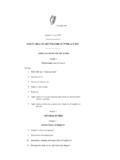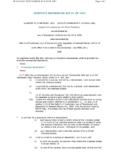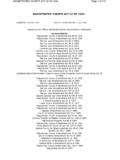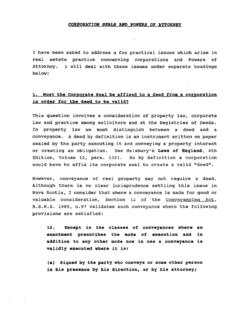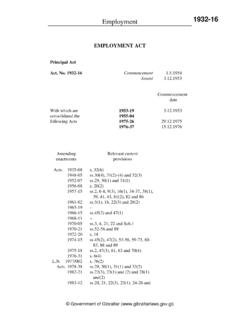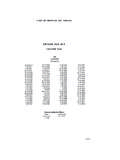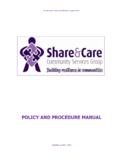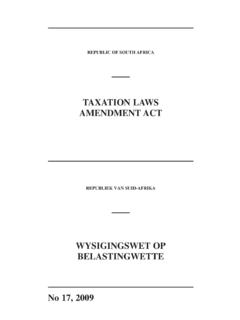Transcription of Sickness and Disability Schemes in the Netherlands
1 1 Sickness and Disability Schemes in the Netherlands Country memo as a background paper for the OECD Disability Review November 2007 2 3 Country memo as a background paper for the OECD Disability Review Part 1: Introduction and main context Page development 5 Socio-economic context 6 Evidence 7 Part 2: Income support programmes Sickness 11 Disability : WIA 12 WAO, WAZ and WAJONG 14 Self-employed women 15 Tax benefits 15 Disability pensions 16 Contributions for Disability benefits 16 Recent reforms and reforms under consideration 17 Relationship between various social protection programmes 18 Collective agreements and occupational Schemes 18 Part 3.
2 Employment support programmes Prevention and reintegration in the Sickness period 21 Reintegration during Disability 25 Sheltered employment 27 Social assistance 31 Reintegration in the reassessment operation 34 Effects Part 4: The position of people with disabilities in society Gatekeeper law 35 Medical care 35 Equal treatment legislation 36 Some figures 36 Patient and client organisations 36 Appendix 1: Actors, consultative and cooperative bodies 39 Appendix 2: Review of relevant Acts 43 Appendix 3: IVA 45 Appendix 4: WGA 47 Appendix 5: Gatekeeper Act 49 References 53 4 5 PART 1: Introduction and main context Policy development Like other Western European countries, the Netherlands has adapted and reformed its social security system since the 1980s.
3 As international competition intensifies, a significant share of industrial production has moved to low-wage countries. The high rate of unemployment that ensued caused a dramatic increase in claims for incapacity benefits and later unemployment benefits. Government spending on social security skyrocketed as a result. Consecutive governments wanted to adapt the system to the trends towards flexibility and individualisation of labour market relations. Their efforts culminated in a complete overhaul of the system in 1987. Government spending on social security decreased after the system was reformed, but the number of benefit claimants continued to rise.
4 By the end of the 1980s, the proportion of non-active members of the labour force had increased substantially, as more and more workers claimed incapacity benefits. Now, along with income protection, prevention and reintegration were being incorporated into the system. Another important new goal was activation ( encouraging participation in the workforce), which reduced social exclusion and strengthened the income position of those on benefits by helping them get back to work. This shifted the focus towards the conduct of all the parties involved: employers and employer organisations, employees and the trade unions, benefit claimants and implementing bodies.
5 The measures taken in this period were of a different nature than the reforms of 1987. The key issue now was to increase each party s vested interest in reducing social security benefit claims. In the 1990s, several measures were taken to increase the vested interests of the parties: 1. Financial incentives and disincentives for employers, employees and implementing bodies were introduced by: increasing the financial consequences of Sickness and incapacity for employers ( by introducing employer liability for an initial period of sick pay and contribution differentiation) increasing the financial consequences of Sickness and incapacity for employees providing grants for reintegration programmes, workplace modifications and other Schemes requiring UWV and local municipalities to outsource reintegration work to private companies.
6 2. Responsibility of employers, employees and benefit claimants for job retention and reintegration was increased by: requiring assessment of workstations for risks to the health, safety and welfare of employees increasing responsibility of employers for reintegrating their sick employees stepping up the obligations of employees, employers and benefit claimants 3. The activating nature of the system was enhanced by such means as: toughening the eligibility conditions for benefits reassessing those on Disability benefit under the age of 50 creating the possibility of privatisation of the Disability risk.
7 6 With these measures the social security system now offers a combination of income protection and activation. The latter benefits the parties directly involved: resuming employment improves the employee s income position and prevents social exclusion. Also the costs for employers go down because of the differentiated system of contributions. The social security system is designed to foster long-term employment. This requires an incentive structure that promotes participation. The social security system should prevent employees from having to claim benefits (prevention) and, should that be unavoidable, the system should encourage benefit claimants to seek another job or return to work ( reintegrate) as soon as possible.
8 Furthermore, the system should stimulate employers to keep their employees and hire jobseekers. The most important changes now in force in the field of Disability are: Privatisation of the Sickness scheme: employer is obliged to pay wages for two years Employer is responsible for the reintegration of sick employees (Gatekeeper law) New Disability act (WIA) Differentiation of the contributions regarding Disability risk Voluntary privatisation of the Disability scheme Stricter eligibility conditions for benefits Reassessment of Disability benefit claimants under 50 More focus on reintegration instruments Re-evaluation of the scheme for young handicapped people.
9 For an overview of institutions working in the field of Disability we refer to Appendix 1. Most important are UWV (the Institute for Employee Benefit Schemes WAO, WAZ, WAJONG, WIA, Sickness Benefit Act), occupational safety and health services and reintegration services. Socio-economic context There are some relevant issues that influence the labour market these days. Most issues are important for the whole labour market, and proportionally affect people with health problems or a Disability . Globalisation, increasing international competition and accelerating technological change are the most important general issues affecting labour demand and labour supply.
10 These issues are the main cause for the rise in skill requirements over the last few years. In our economies however, there are many low-skilled people who lack the basic qualifications for participating in this knowledge economy. Their position on the labour market tends to get weaker and weaker. Our challenge for the coming decade is to make sure that these people are integrated in society, and have the opportunity to contribute to the welfare of society. And with the background of an ageing population, that is a very important task, because everyone is very much needed on the labour market.










